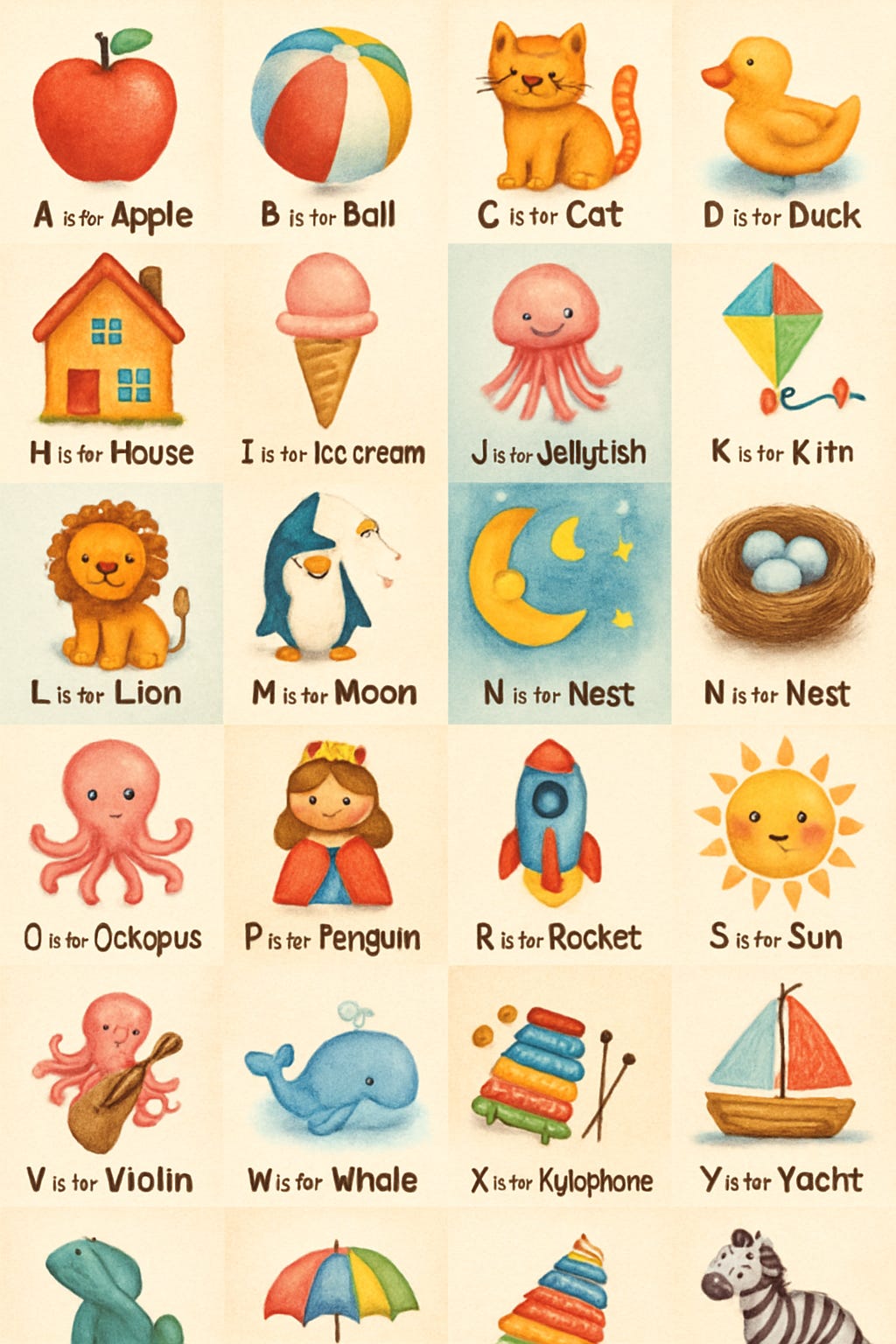Will AI Agents Replace Junior Employees?
The move to agentic AI could flip the corporate hierarchy on its head.
It’s a tech billionaire’s dream: a stable of AI agents busily working day and night while middle managers (some human, some AI) turn around insights and prep the work for end users while a large group of senior leaders oversee it all, reaping the windfall of labor without pesky salaries and benefits.
Is that our new reality? Probably not, but it’s called creative license, so let’s roll with it. We do know AI will have serious consequences for the labor market, even if we don’t know what those consequences are quite yet, or how severe they will be. One interesting notion coming out of the surge in agentic AI is the potential inversion of the corporate hierarchy as we know it today.
Pyramids: Not Just for Dead Pharaohs
Anyone who’s worked in an office for any period of time intuitively knows the hierarchy, from entry level to CEO. There’s a protocol to interaction from junior employees to middle management to C-suite folks - who’s copied on emails, who needs to be looped in when, who you make eye contact with.
And one of the main reasons for this is that the higher up you go in a particular organization, the fewer people there are at successive levels. There’s only one CEO, but there could be hundreds of analysts. All of the layers in between are meant to drive decision-making efficiency that translates the labor of low-level employees into the strategy of upper-level leadership (and, of course, value to shareholders.) This puts a lot on middle management - the unsung heroes of the corporate world, but I digress.
It’s not a perfect system, but it’s the one we’re working in (shout out late-stage capitalism.) And it’s often portrayed as a triangle, with those coveted C-suite spots up top and the hands-on-keyboard labor at the bottom. But the pyramid as we know it may be on its way out with the introduction of artificial intelligence.

The Shrinking Middle (Management) Class
Before we get to Marc Andreesen’s wildest fantasies, the reality is that the middle of the pyramid has been under pressure of late thanks to layoffs in some of America’s largest companies.
Amazon, for example, in putting forth their more stringent RTO plan last year also threw in that they were reducing the ratio of managers to individual contributors, feeling like a dad of two small kids in suburban New York in that their middle had grown a bit more than they would have liked.
While citing bureaucracy as the main reason (personally, I would have started with the fact that they have two US headquarters and a level system that would make the armed forces blush), the reality is that only so many people can report into a manager before said manager loses their effectiveness.
Middle managers have a job that isn’t easily replaceable by AI - it’s a low information environment where they have to juggle the visions and goals of upper management with the labor hours of juniors. There’s a lot of nuance there, as well as uniquely human aspects to what needs to be delivered (executive A loves PowerPoint with lots of text, executive B wants all visuals with good voiceover, executive C is somewhere in the middle, etc.)
The other thing about today’s models that people typically point to as “AI” is that they are trained on the entirety of the internet. Put bluntly, taken as a whole the internet is an absolute cesspool of some of the worst traits of humanity - just take a look at any random Facebook comment section to lose even more faith in the species. If you started using the whole internet as a guide to managing people, you would be in HR’s office before the end of the day.
AI Replacing Juniors - Probably Not, but Let’s Pretend
While middle management is a tough nut to crack for AI as of today, the reality is that with the rise of agentification within the LLMs, there is a real possibility that a lot of the rote work done by entry-level employees in white collar jobs in the service industry can likely be replaced by AI agents.
While this newsletter’s position has been (and continues to be) that companies should be looking to drive efficiencies within existing labor with AI, there are a lot of things companies do that do not jive with TDNBW. So we need to look past our own biases and envision a world where companies go after the lowest hanging fruit and try to replace as many juniors with AI agents as possible.
In this scenario, AI begins to remove the “grunt work” typically given to entry level employees. Highly rules-based, but tedious work like QA of data, real-time flowchart updates, media tagging and trafficking can be done just as effectively (if not moreso) by machines (once trained properly, of course.)
Given that, the pyramid begins to look a bit more heavy in the middle - something companies are trying to do away with, as we saw above. So if we follow the rules of fewer middle managers and fewer entry-level employees (replaced by AI agents), we’re actually looking at a flipped pyramid - like a corporate version of the Louvre shopping mall.
Short Term: More M&A While Employee Leverage Weakens
This newsletter is not convinced that agentic AI will be able to wholesale replace entire FTEs in existing client services models. The best models out there (at least commercially available ones) are simply not performing in ways I would expect first-year analysts to (more on that in the “AI Usage in This Post” below.)
But let’s suspend disbelief and say that agentic AI can eat up a few FTEs on the staff plan in a white collar service model. The overall premise passes the gut check. We know companies do anything and everything to trim costs. And we know human capital is the largest line item in the debits column of any financial report for established, mature companies.
We also know the amount of money poured into AI R&D means that there needs to be a return for said investment - despite OpenAI’s abysmal corporate structure, it is not a charity. So even if all of this didn’t make sense, there certainly will be corporations that try to force it into their operating models.
So what does that look like in the short term for an industry like, say, advertising? Entry-level jobs become fewer in number, driving further competition in the space for college graduates and those a few years into the industry. The middle stays relatively the same, but now those folks are managing a mix of agents and humans.
And the top becomes larger in number, as they have to lean into strategy and stakeholder communications more than ever as the middle upskills in AI management and the few entry-level employees navigate a constantly changing professional environment while fighting T-900s to keep their jobs.
What this means for the industry at large is that there is fiercer competition for good entry-level folks among a shrinking number of employment options, as M&A would likely be accelerated by a phenomenon where tech and capital expenditure become the game changers for corporations.
This will also further remove employee leverage in the entry-level space - an already disadvantaged area to be, given the wider labor market. With a larger supply of college grads going for an even smaller number of positions, employers will lower salary guidelines to further drive financial savings from a move like this. And there’s always the pesky elite overproduction problem that this newsletter humbly believes is vastly understated in Western economies, particularly in the United States.
Long Term: The Well Runs Dry
If the story for the short-term effects of replacing a portion of the junior employee base with AI agents seems bleek, the long-term can feel economically apocalyptic.
With AI agents replacing some rote tasks typically relegated to young, idealistic employees, a knowledge transfer gap develops that will widen with each successive class of entry-levels. Is there short-term benefit to learning the nuts and bolts of these incredibly minuscule tasks outside of being able to do them to pull a paycheck? Probably not. But there is a benefit to it when you’re in the middle, managing people doing it, to help troubleshoot and work through issues in real-time, drawing on your executional experience.
Once a few classes work their way through the hierarchy and something breaks, you’re going to end up in a meeting with everyone looking at each other asking how it originally worked and an AI model asking for a prompt. With no one having come up the ladder doing this “grunt” work, there will be no one there to draw on past knowledge and fix the problem. This is the “Safety Tag” issue this newsletter has discussed, but on steroids.
This also presents a classic marketing problem: the leaky bucket, but in reverse - more of a drying well. With fewer and fewer entry-level people needed, but more senior folks required to package up and manage client relations, who is going to make up the successive classes of management? Industry consolidation can only go so far in the war for talent. The internal talent well will be quite dry and the math is not mathing when you are dealing with an industry-, if not economy-wide, approach to AI replacing talent.
So What Do We Do?
It will take people much smarter than a sarcastic Bostonian who writes - mostly through sitcom memes - for free on the internet to figure this out. TDNBW’s stance has always been that AI is a tool and we should be using it as such. Power tools don’t decrease the number of people needed for a job - they just make the job go faster.
Finding places where AI complements human work is key - how can it drive efficiency while maintaining a human pulse on the end product? Those businesses that look to replace junior employees as quickly as possible with agentic AI may see short-term success, but they’re mortgaging a future labor market on terms they simply will not be able to pay.
Just like with Artificial General Intelligence, this newsletter believes that we are not as close to agentic AI replacing FTEs as some would think. It certainly is not impossible, and is more probable than not to happen within this author’s career, but the scale of ability and adoption are murky at best. What remains is the advice to know as much about AI as you can so you can Be That Human - understand how it affects your vertical, your company, your products, and most importantly, your career.
Grab Bag Sections
WTF Metro North: We haven’t had a good WTF about public transit recently, so I wanted to toss a throwback in here. I’m a monthly Metro North pass holder, and I prefer the physical ticket to one on my TrainTime app.
Over the years, I’ve come to appreciate the design of the ticket - particularly its ombre change in color from month to month. Very little about commuting creates joy, so seeing the new color for the new month was the water being squeezed out of the stone in that regard.
But now, dear reader, the MTA has taken even that small moment from us. I thought the first time it was a fluke - maybe it was a temporary pass, or the machine I bought it from was itself old and in need of replacement.
After a few months of buying the tickets across multiple machines at multiple stations to prove out my theorem, I am sad to announce that, in fact, Metro North has done away with the colorful monthly tickets and replaced them with one of the most uninspiring, boring, and somehow physically larger dystopian monstrosities you see below. The final iota of joy has finally been removed from the Westchester-NYC commute.
Album of the Week: We’ve had four posts in a row of Clipse AOTWs. I try to keep the rap diluted amongst a healthy mix of other musical genres on this newsletter, but the excitement of a new Clipse album (and the ultimate delivery of a no-skipper) was too much to overcome. So as the palate cleanser for those not into coke rap, we’re heading to what is possibly the opposite end of the musical spectrum: turn of the 20th-century classical music.
While it’s not quite an album, but more of an orchestral suite, Gustav Holst’s The Planets is a collection of tracks meant to be played in a certain sequence, so we’re going to go ahead and file that under the “album” category.
The first thing you’ll notice is that the planets are out of their interstellar order, with Mars beginning the suite as opposed to Mercury. You’ll also notice that Pluto is missing - this is not an omission. The on-and-off planet was not discovered until 1930, a full decade and a half after the composition of The Planets.
Beginning with “Mars,” the listener is introduced to the most dramatic of the tracks. One can imagine seeing the red planet over the horizon as they approach the extremely hostile surface (it is named after the Roman god of war, after all.) Once past the drama of the red planet, Holst transitions into “Venus,” the most peaceful of them. It’s a welcome respite, if not a bit abrupt.
From there, Holst jumps to “Mercury” - here the listener can catch their breath from the roller coaster of Mars and Venus with the playful little gray rock, as there’s little drama in the track (and where it does pop up, it’s resolved quickly.)
Then we come to “Jupiter” - this is the standout track. The triumph! The exuberance! If you only listen to one piece, make it this one. It’s what pulled me to the album in the first place with its massive gravitational pull.
Skipping over to “Saturn,” the drama returns, though not nearly as high-stakes as our intro. We then head to “Uranus,” where, after a frightful start, we mellow back out, closing out with “Neptune,” which ends the suite on an ephemeral and mysterious note. It’s hard not to want to start at the beginning, ending on that kind of vibe.
So while you’re zooming through space on our big blue and green marble, give The Planets a spin. You’ll enjoy it, even if you’re not into astrology like its composer.
Quote of the Week: “There is no failure except in no longer trying.” - Elbert Hubbard
AI Usage in This Post
The AI used in this post is limited to the images, as usual, but I did want to point out an interesting experience trying to get the pyramid images the way I wanted.
They’re about 85% of the way there, but the back-and-forth with multiple models across multiple UIs to get them there was painful. To the point where if this were a human employee, I’d wonder why they were being so obtuse at best and downright insubordinate at worst. My children, who routinely have a tough time listening to me, take direction better than these models most times. That is not a trait I am looking for in junior employees.
One extremely fascinating aspect of this is that I got so frustrated with the model, I began to talk to it in ways I would never talk to an employee. When I called it a moron and reiterated the task, it delivered. When I then gave it positive feedback and asked for a tweak, it completely bungled it. When you realize that it’s been trained via the internet - and all of the ways humans communicate with each other on it - this insight actually makes sense. When you realize the implications that could have for agentic AI replacing FTEs, the implications become much darker.
The fact that it can’t make a simple alphabet book off of a single prompt does not bode well, either.
See you in two weeks!








